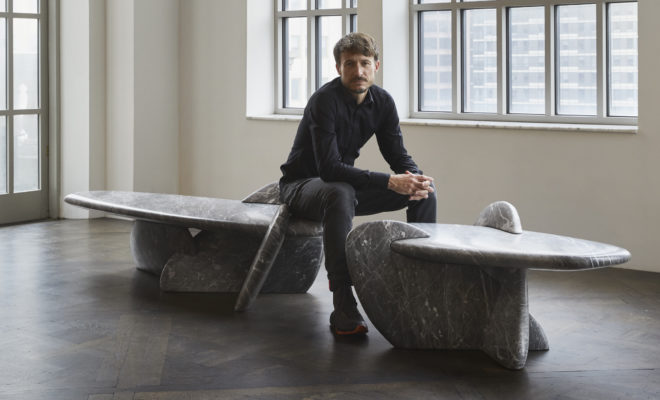 Charles Trevelyan with his newest pieces, Fuse I and Fuse II, 2018. COURTESY OF CARPENTERS WORKSHOP GALLERY.
Charles Trevelyan with his newest pieces, Fuse I and Fuse II, 2018. COURTESY OF CARPENTERS WORKSHOP GALLERY.
Exhibition
Charles Trevelyan’s US Debut at Carpenters Workshop Gallery
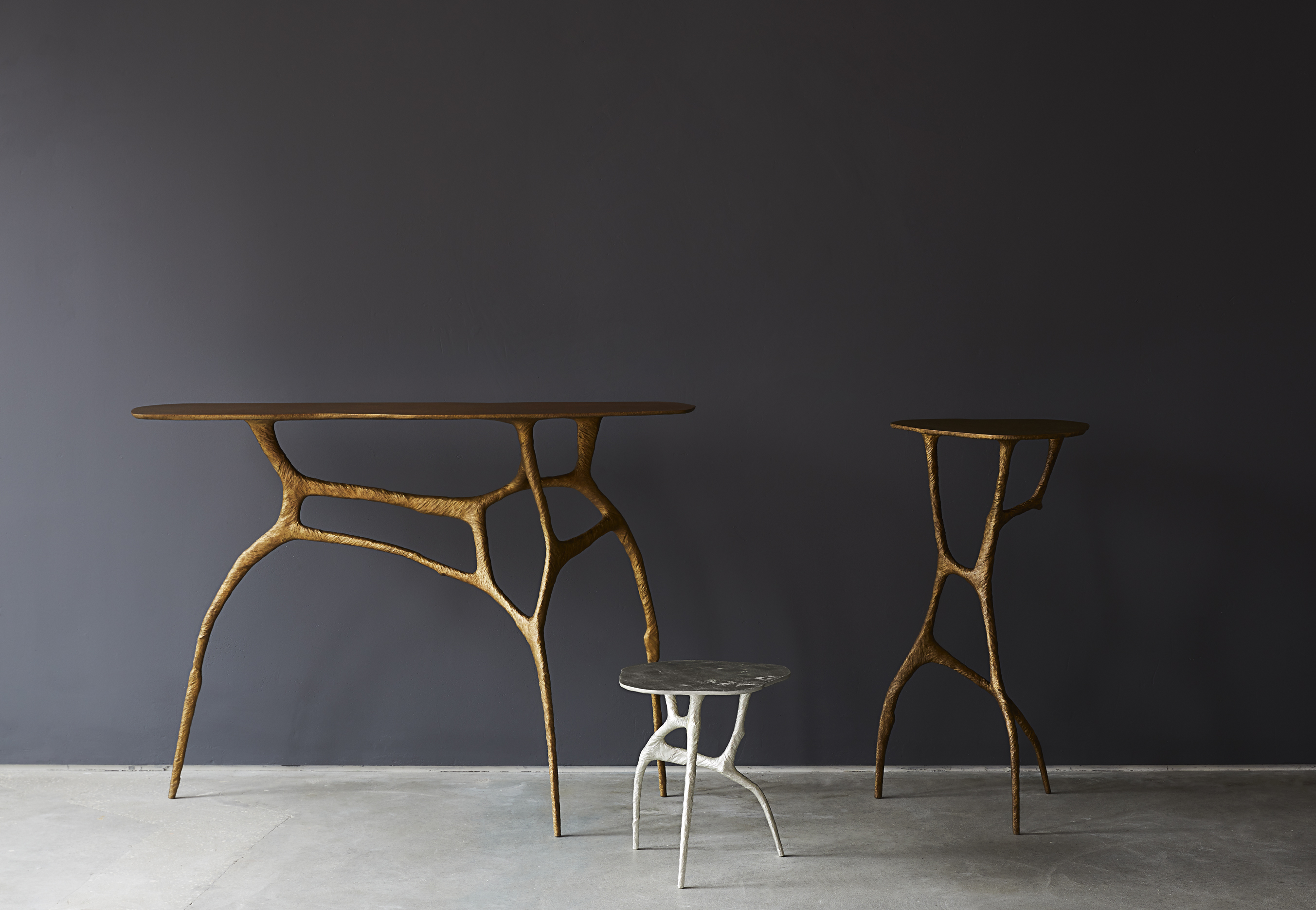
A selection of Trevelyan’s cast-bronze works. COURTESY OF CARPENTERS WORKSHOP GALLERY.
At Carpenters Workshop Gallery’s space overlooking Fifth Avenue, a patinated bronze table, with thin, knurled legs, balances lightly on the concrete floors. The penthouse in the Philip Johnson-designed building makes for an unlikely, yet striking, setting for a piece that appears to have sprouted directly from the earth. The Supine table is one of seventeen works on view by Australian designer Charles Trevelyan in his first US solo exhibition, Fuse.
The designer’s work might best be described as bridging the fields of sculpture and industrial design. With a background in engineering, Trevelyan brings a structural expertise to his pieces. His childhood spent in the Australian outback, however, has not been lost. Although he now is based in London, arguably the industrial design capital of the world, the organicism in his work reflects values of handicraft, which Trevelyan says are culled from Perth’s appreciation of these same qualities.
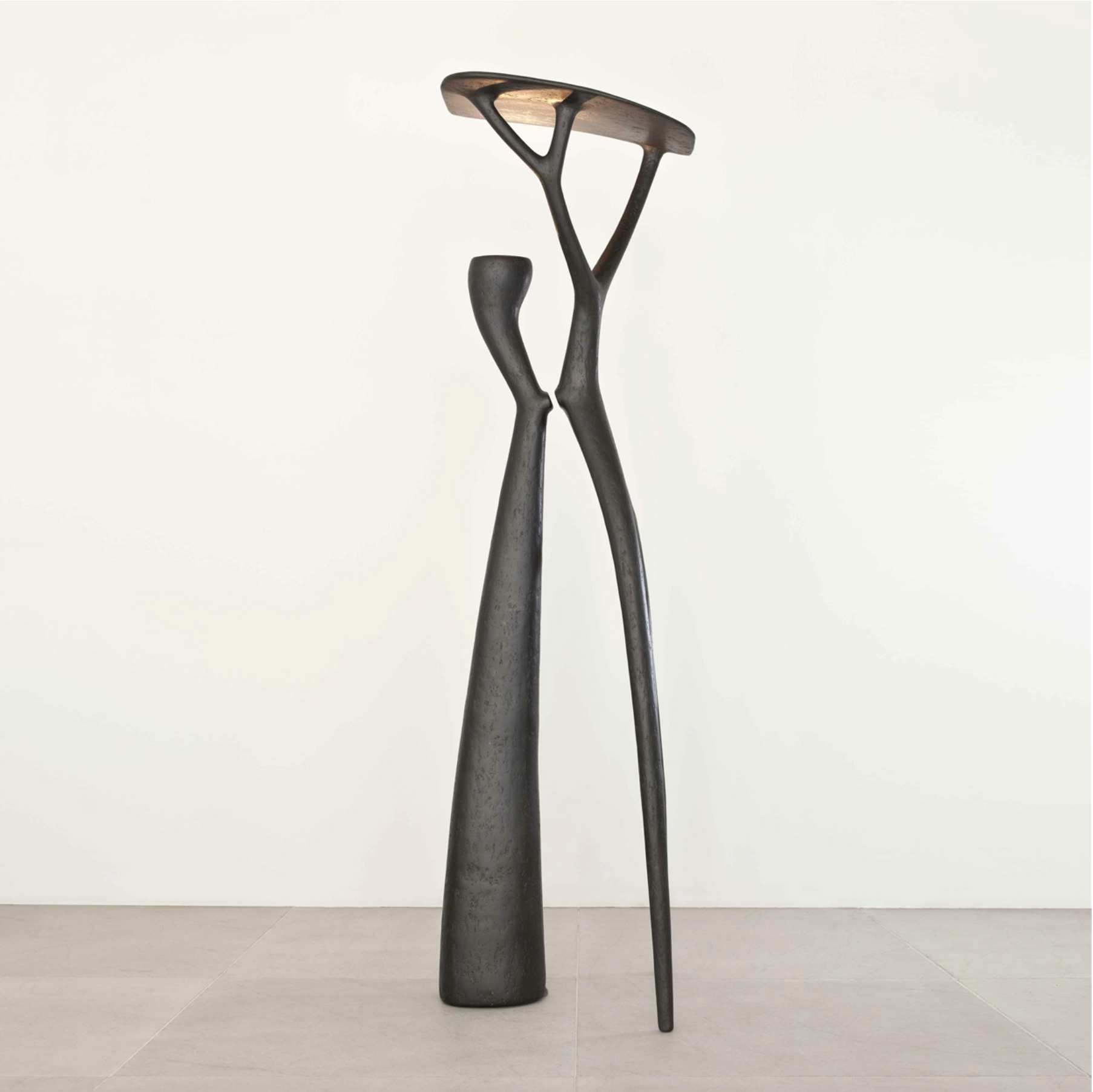
Close, but not touching, magnents keep the two elements seperate on Trevelyan’s On A Limb lamp, 2010. COURTESY OF CARPENTERS WORKSHOP GALLERY.
Trevelyan’s earliest piece in the show, a standing lamp from 2010, is a perfect starting point for understanding his evolution as a designer. The dark timber lamp is really a sculpture in two parts: A smaller column with a single bulb almost kisses a free-standing facing column, the two forever separated by repelling magnets encased in the wood. Trevelyan was inspired by the idea of two elements that could be tantalizingly close, but never touching. Placement of the magnets was deliberate, “I didn’t want it to be a trick,” he insists. The organic form and concept are carried out by an underlying structural system. This relationship, between engineering, materials, and sculpture, is what defines Trevelyan’s work.
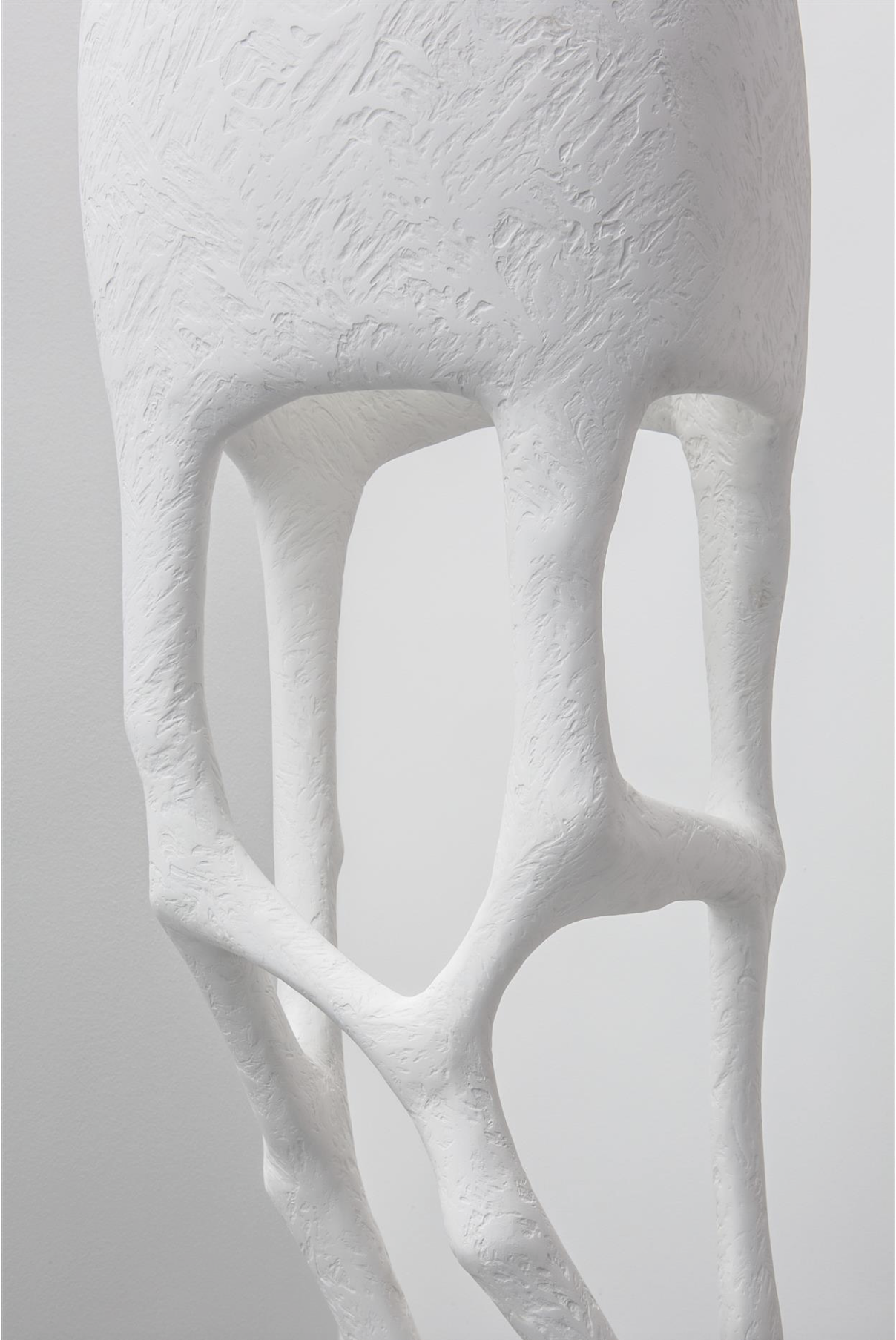
The texture on Trevelyan’s Circumspect lamp has a deliberate linearity, revealing how each aspect of Trevelyan’s work is underlined by a purposeful order. COURTESY OF CARPENTERS WORKSHOP GALLERY.
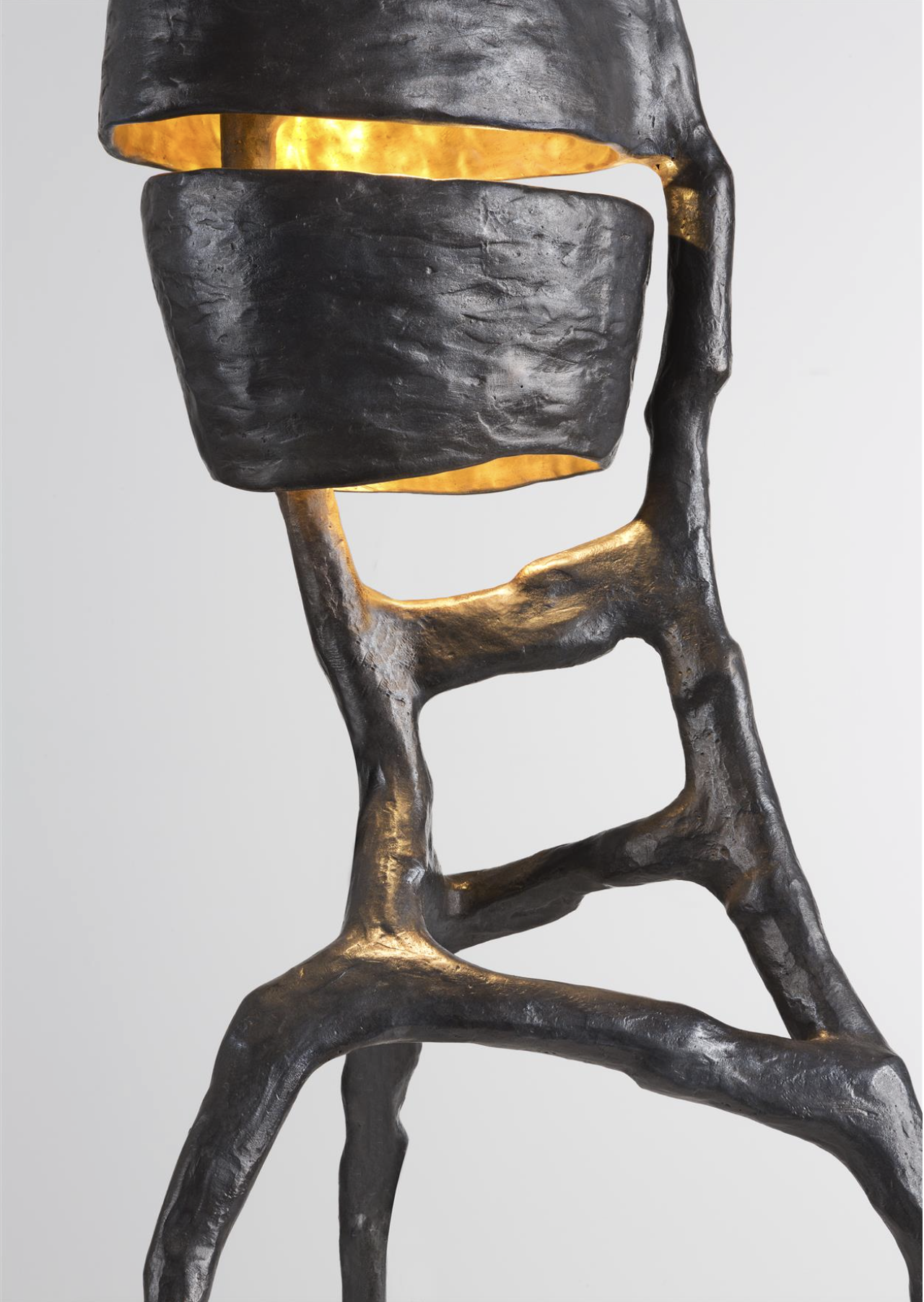
Refining his earlier standing lamp, the lights here are seamlessly incorporated into the bronze, creating a more harmonious unity. Bipartite Grey, 2013. COURTESY OF CARPENTERS WORKSHOP GALLERY.
Figuring out this balance is not easy—the pieces are developed through extensive prototyping. Trevelyan says that he sketches to record the process, but the true experimentation comes from creating 3-D models. Trevelyan brings his prototypes into the gallery, underscoring the standard collaborative process between Carpenters Workshop and its designers. In the instance of his Camber coffee table, the first model was initially rejected by the gallery’s principal, Julien Lombrail, but when he saw the tabletop upside down as it was being loaded back into the car, the texture underneath proved to be exactly what he was looking for. The natural finish of the bronze belies the highly resolved engineering underneath, a testament to Trevelayn’s mastery of materials and form. Trevelyan notes his partiality to the golden patina of bronze, how it shows wear with age. He stresses that his pieces are “not precious objects” and implores “I want people to use them,” emphasizing his commitment to function and utility.
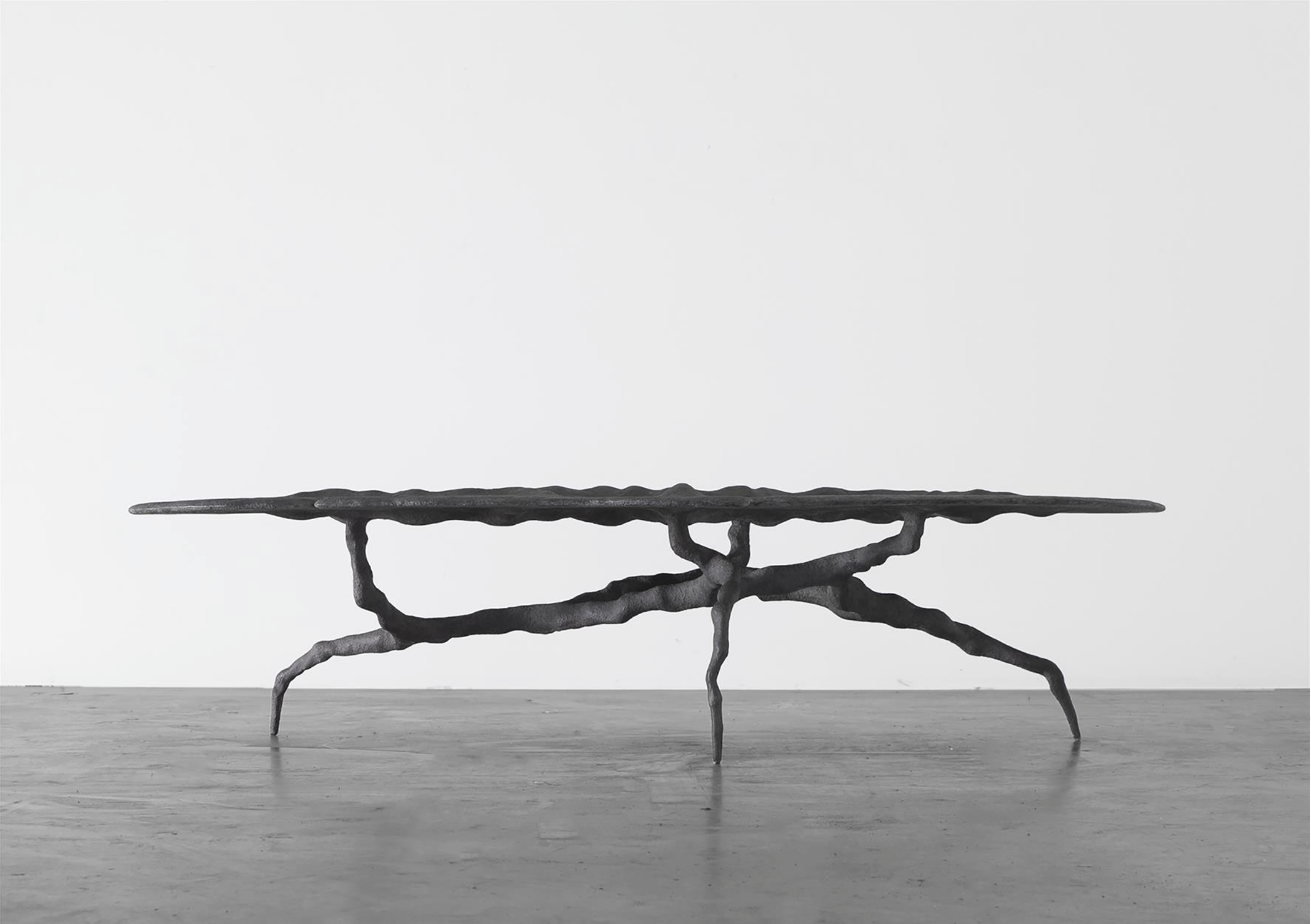
Camber I table, 2016. COURTESY OF CARPENTERS WORKSHOP GALLERY.
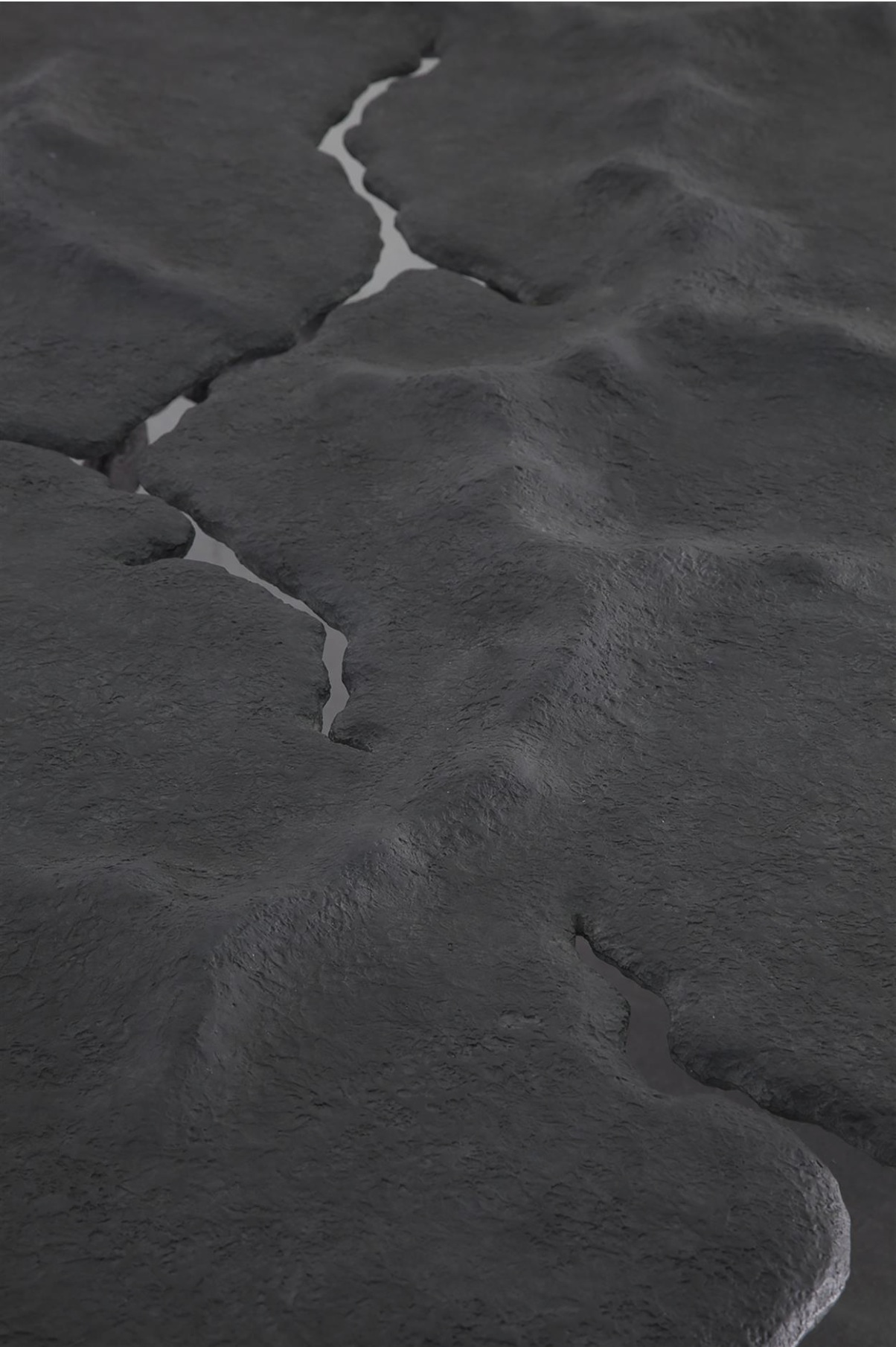
Detail of Trevelyan’s Camber I table. COURTESY OF CARPENTER’S WORKSHOP GALLERY.
Trevelyan explains that casting liquid bronze prescribes a very specific process that allows for little variation. Trevelyan’s newest pieces—a pair of coffee tables—represent an evolution from his work in bronze. Namely, the tables are made from Hotavlje, a cool grey marble from Slovenia with dramatic streaks of white. The marble was quarried next to the workshop where the tables were constructed, representing an important “unity of source” says Trevelyan. The form of the tables arose out of “the idea of squashing pebbles together,” which was inspired by Trevelyan’s tendency to collect stones and other natural materials as he goes about his day. However, these tables are the result of “deliberate sculpting,” stressed Trevelyan, emphasizing the complex process it took to combine the separate shapes into their final, cohesive form. While his earlier bronze work is “structural rather than sculptural,” these new pieces take on a purposeful “ambiguity of form” where organicism begins to mask the underlying mechanics. This direction is where Trevelyan hopes to move in the future, creating more abstract, sculptural works, and to develop, “parallel collections with distinct visual identities.”
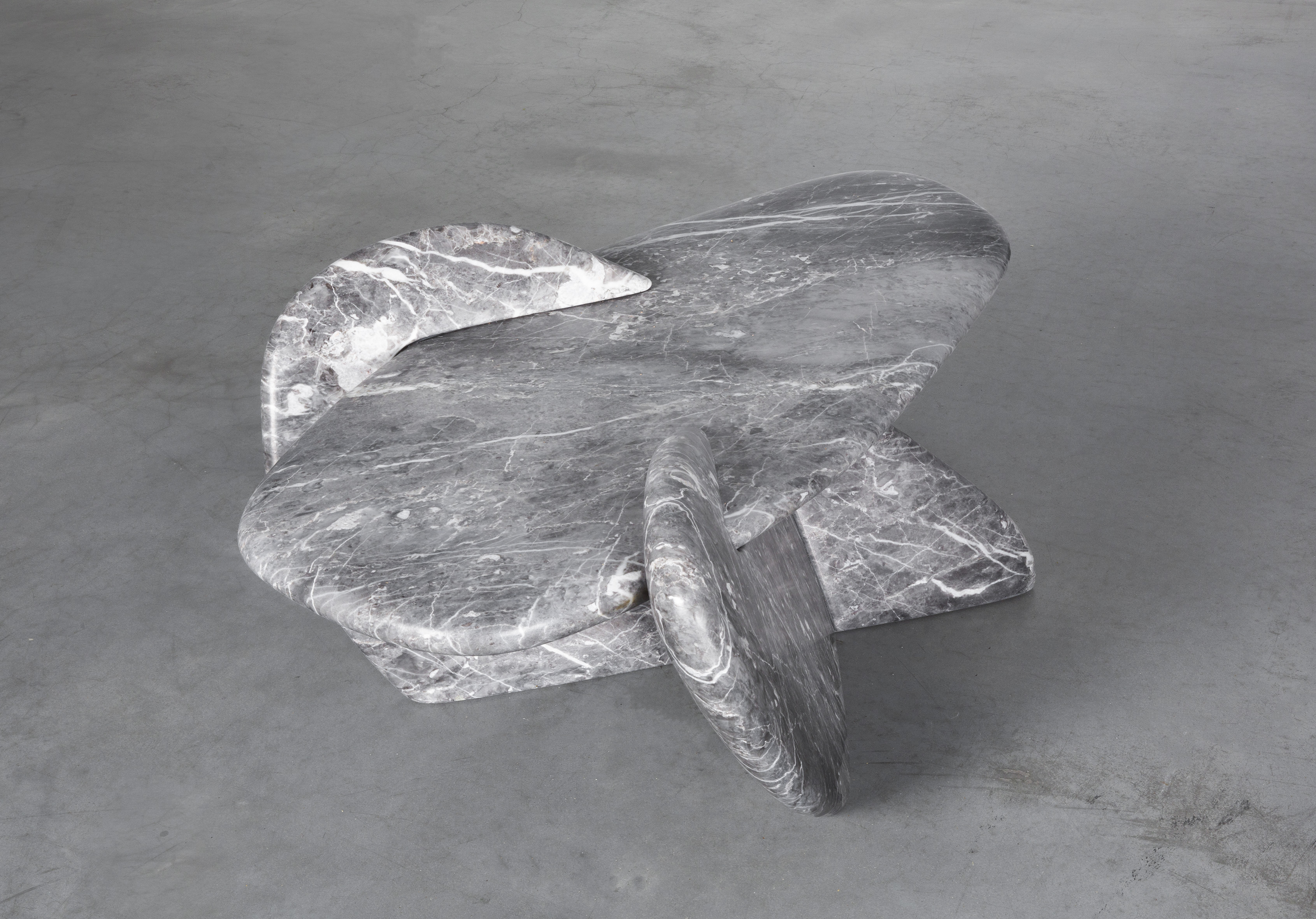
Fuse I, 2018. COURTESY OF CARPENTERS WORKSHOP GALLERY.
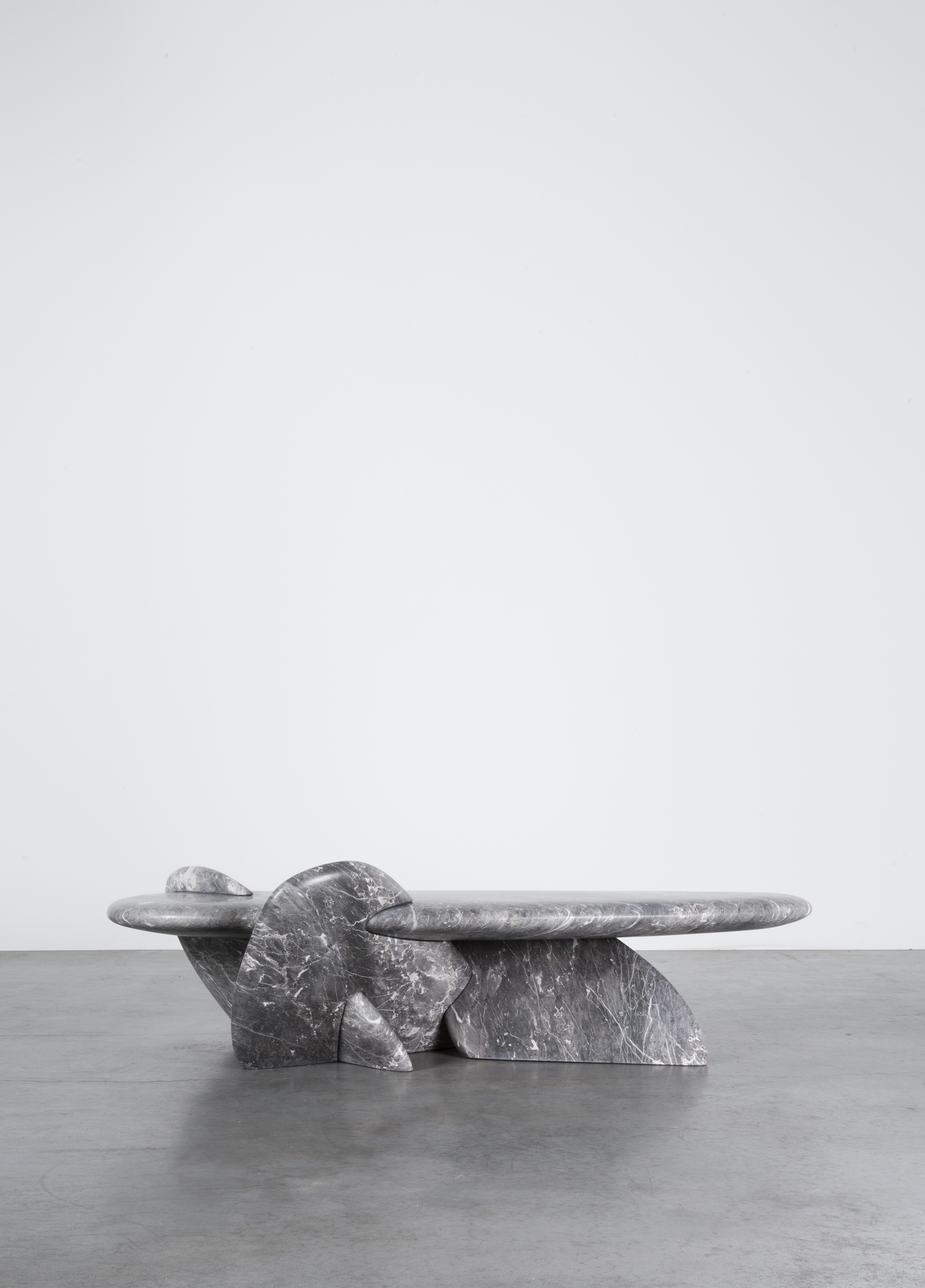
Fuse II, 2018. COURTESY OF CARPENTERS WORKSHOP GALLERY.
By revealing and obscuring structure through various mediums, Trevelyan explores the limits of what’s possible. And this negotiation between engineering and sculpture, the hand and the machine, marks Trevelyan as a noteworthy force in contemporary design.
Charles Trevelyan Fuse is on view at Carpenters Workshop Gallery | New York until October 27, 2018.










